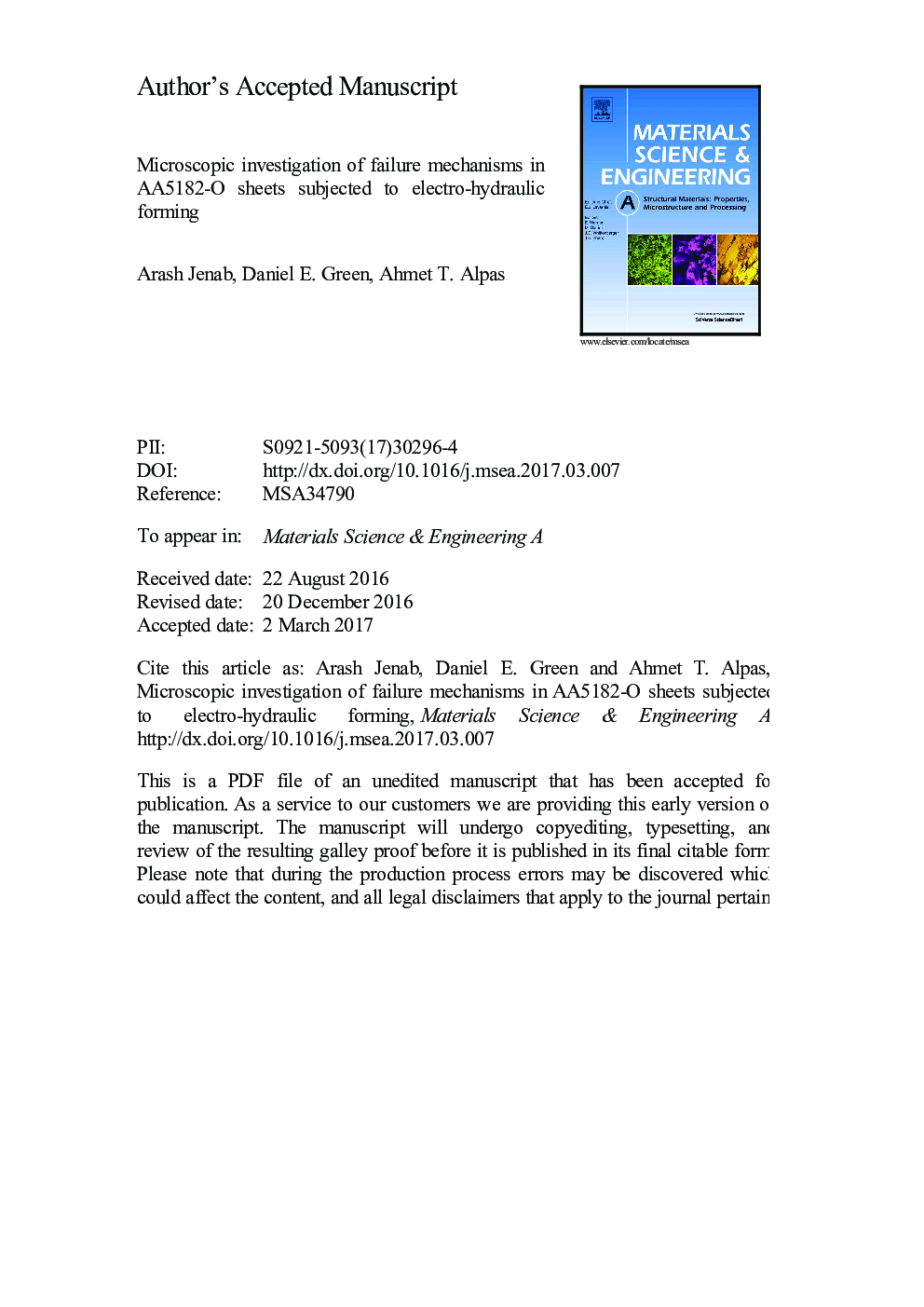| Article ID | Journal | Published Year | Pages | File Type |
|---|---|---|---|---|
| 5455900 | Materials Science and Engineering: A | 2017 | 26 Pages |
Abstract
In this study, damage mechanisms in AA5182-O aluminium sheets are investigated using quasi-static (QS) Marciniak tests and high strain-rate electro-hydraulic forming (EHF) process. The results confirm that void nucleation, growth and coalescence are the main damage mechanisms of AA5182-O at both high and low strain rates. The EDS analysis suggests that cracking of Al3(Fe-Mn) intermetallic particles is the main source of void nucleation, whereas Mg2Si particles do not majorly influence void formation. Void growth analysis suggests that specimens deformed under QS conditions contained more voids in areas away from the sub-fracture surface but specimens deformed at high strain rate exhibit more significant rate of void growth close to sub-fracture areas. Void formation is suppressed by increasing the applied energy in EHF. And more significantly, the growth of voids is suppressed due to the high-velocity impact of the sheet against the die which plays an important role in increasing formability of AA5182-O aluminium sheet in EHF process. When the void percentage increase remains less than about 0.5% AA5182-O can be formed safely. However, when the void percentage increases beyond 0.6-0.8% fracture becomes inevitable.
Related Topics
Physical Sciences and Engineering
Materials Science
Materials Science (General)
Authors
Arash Jenab, Daniel E. Green, Ahmet T. Alpas,
